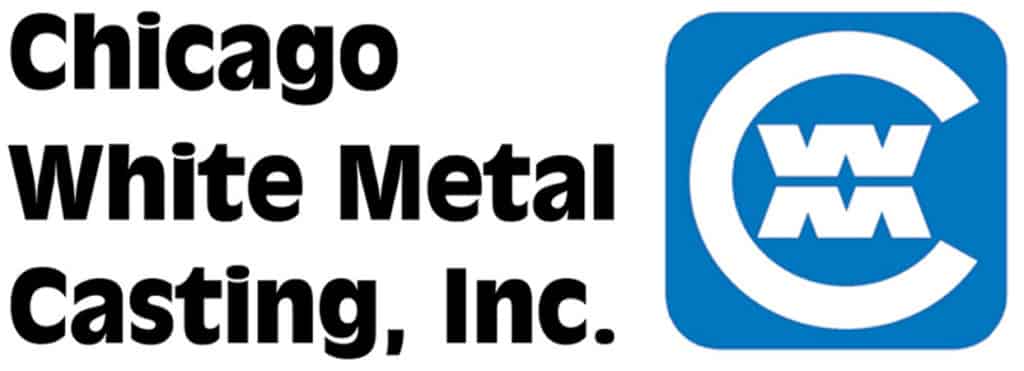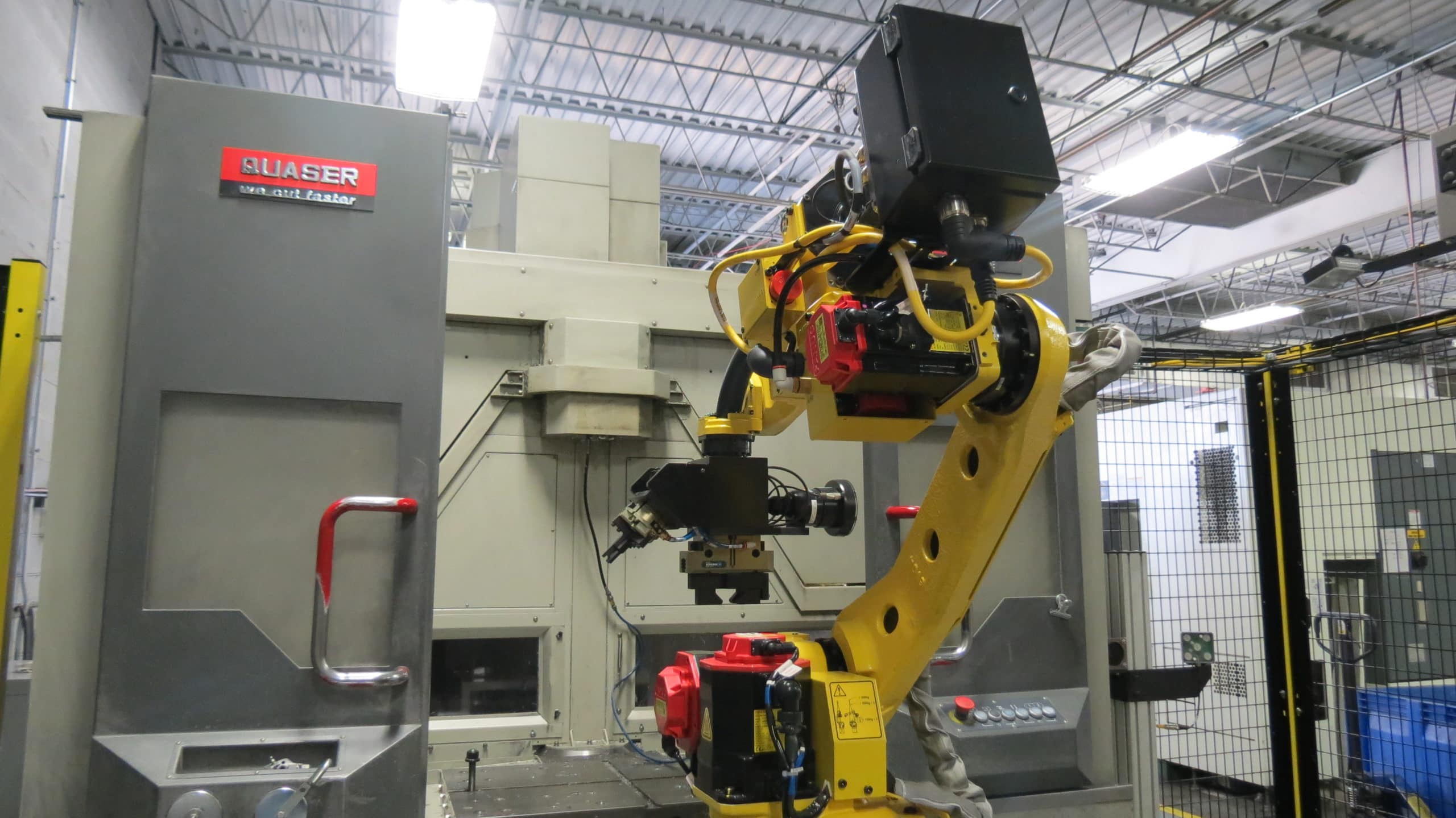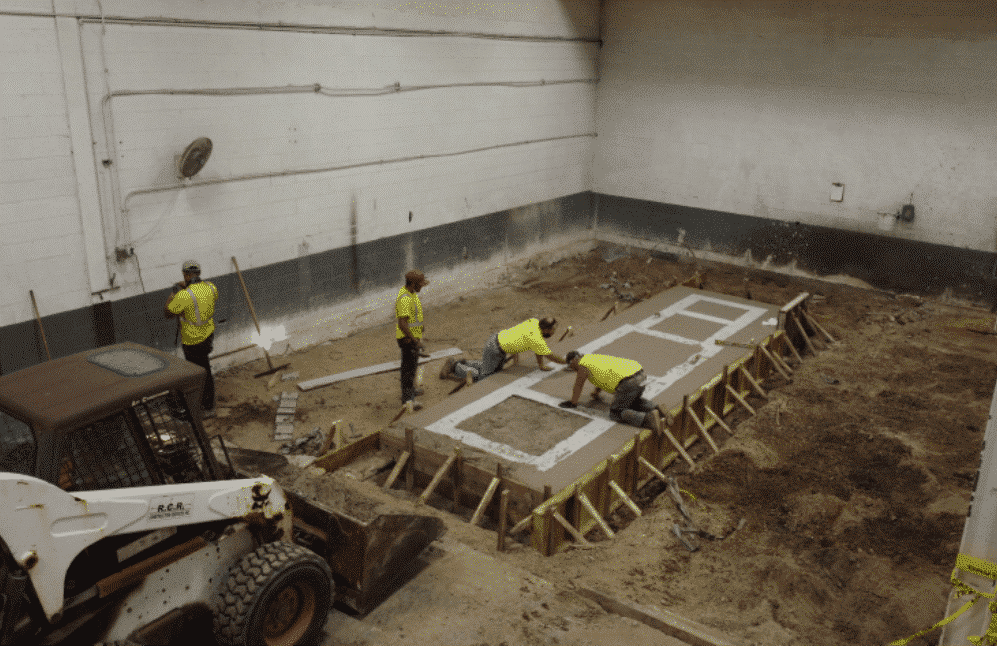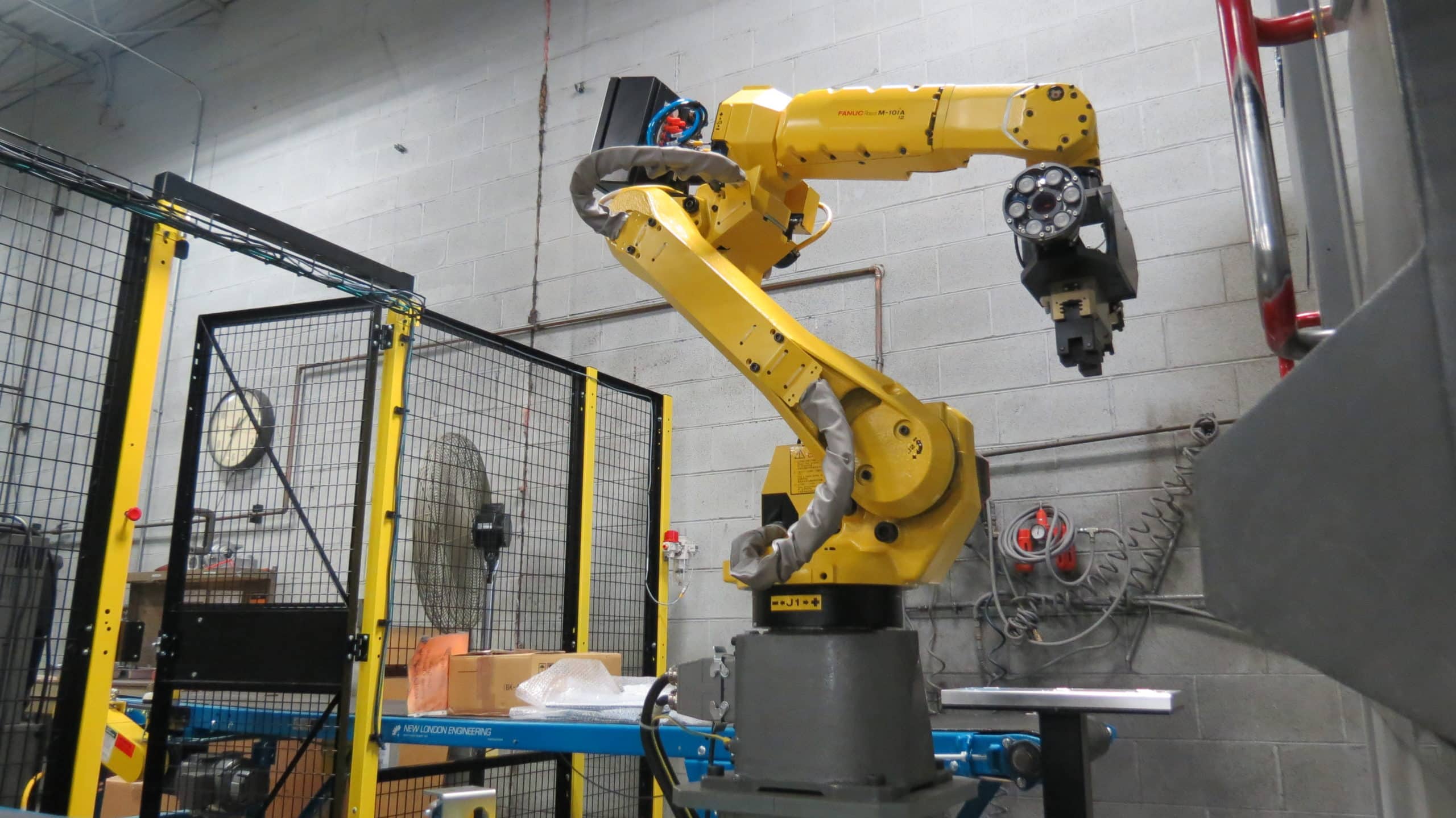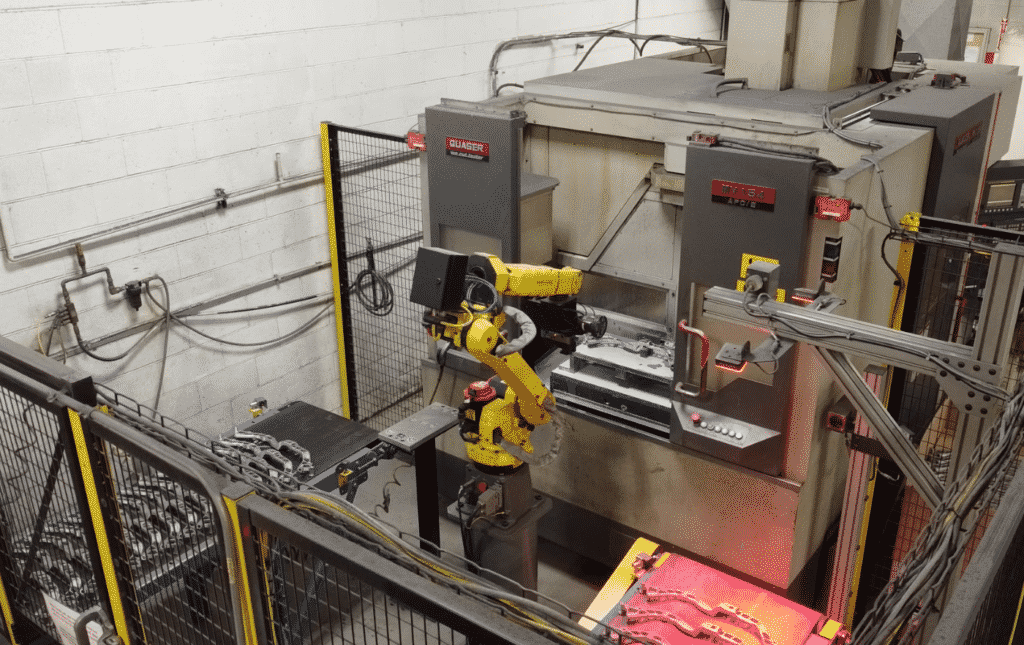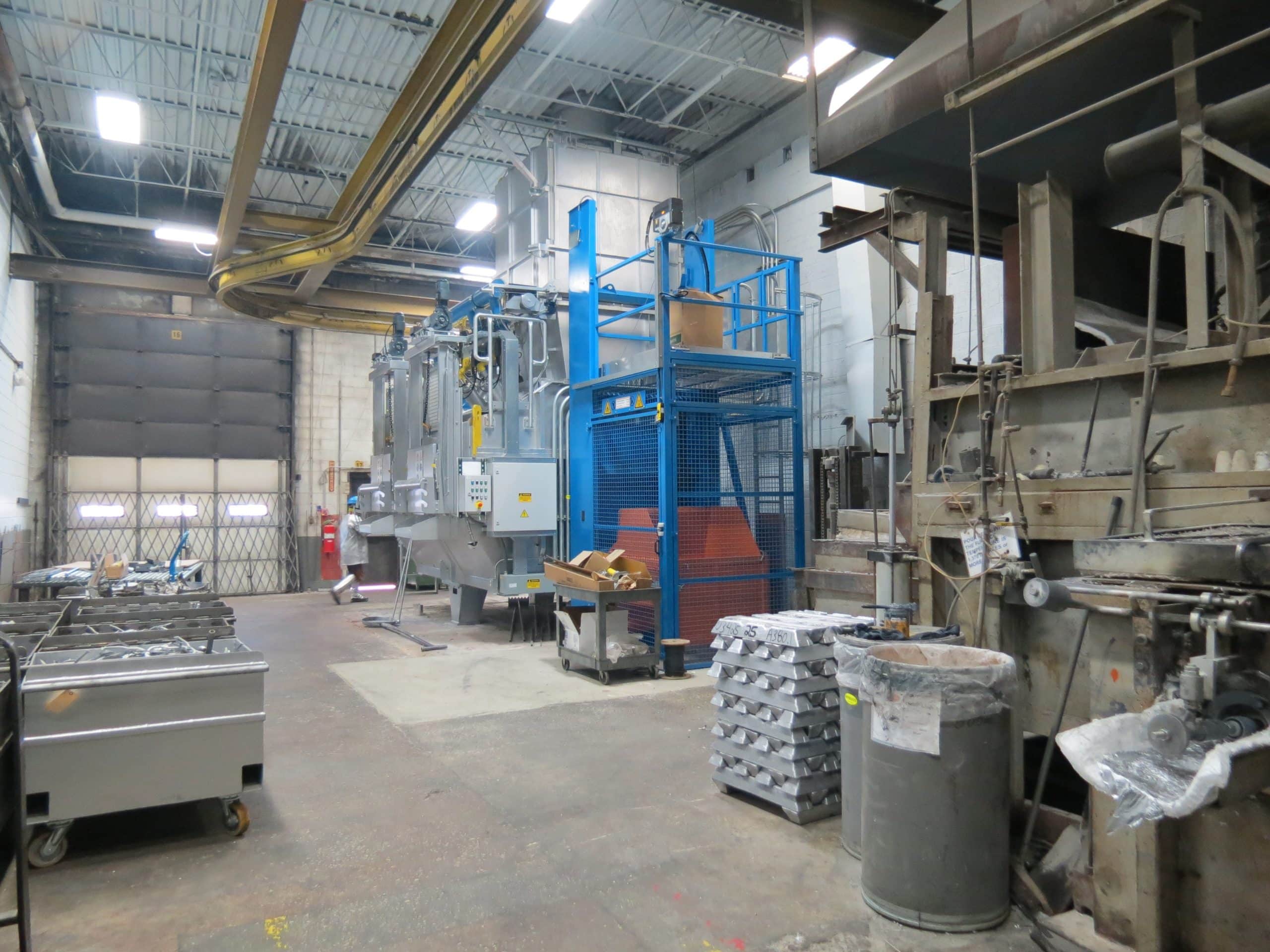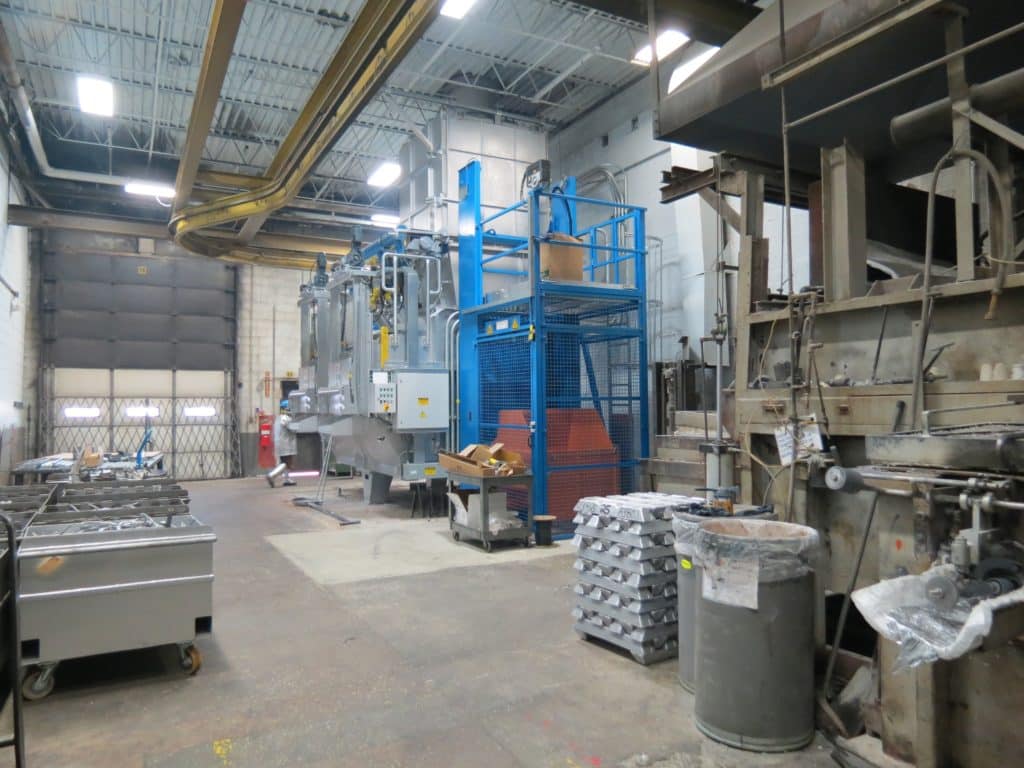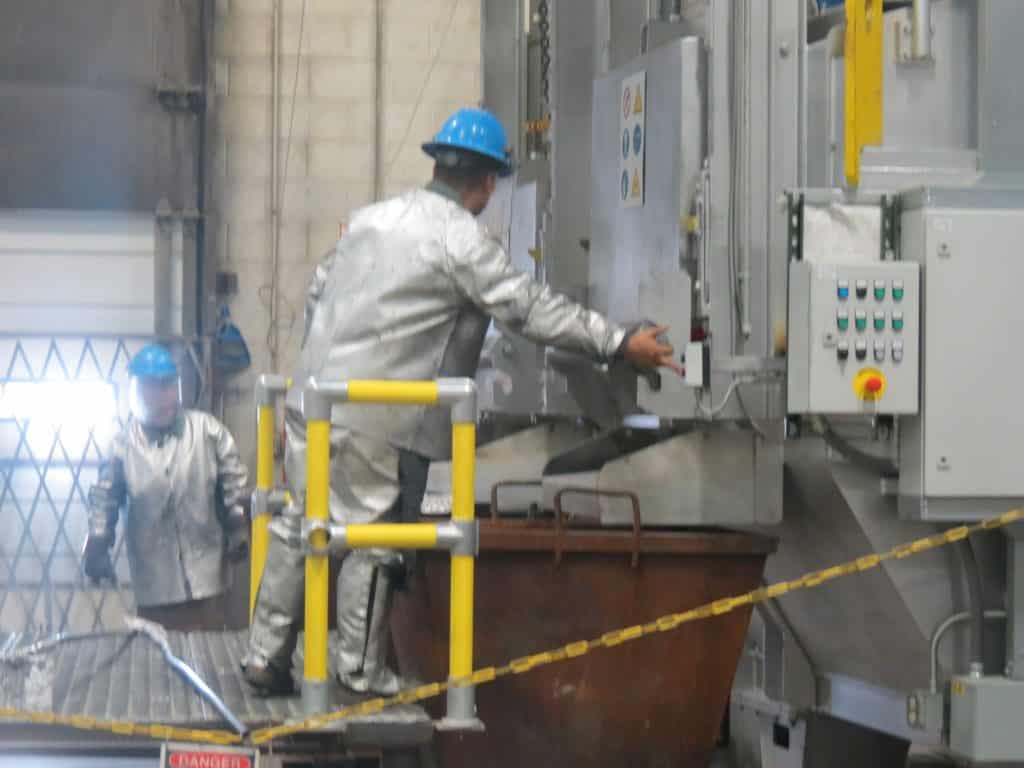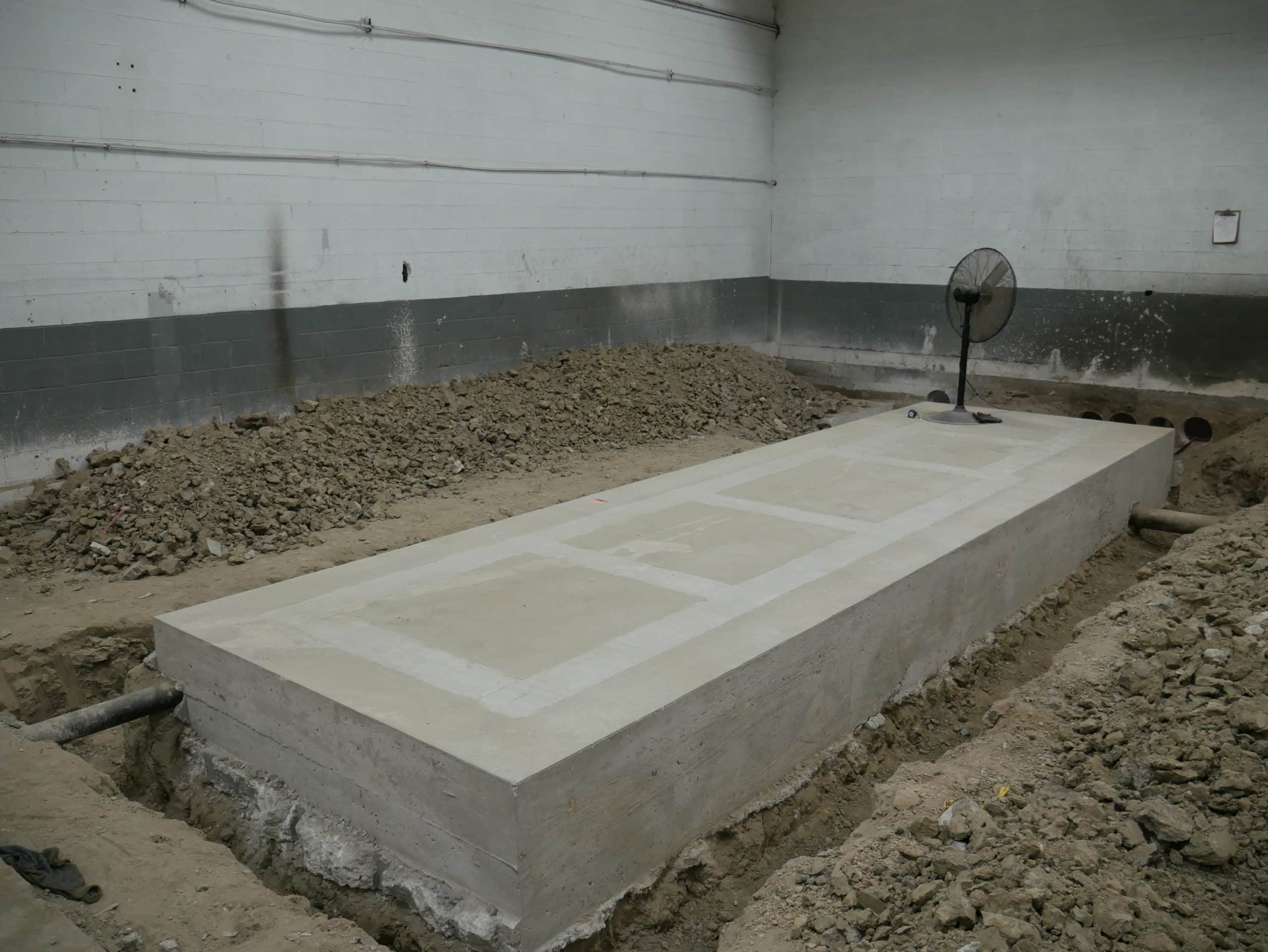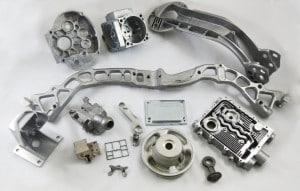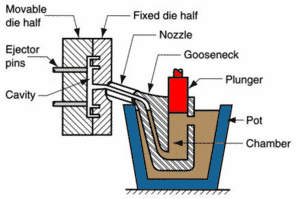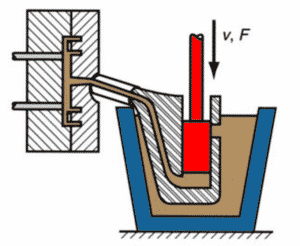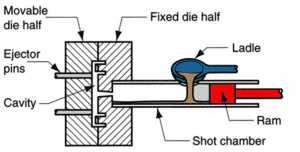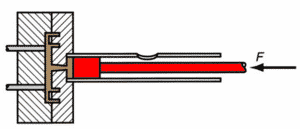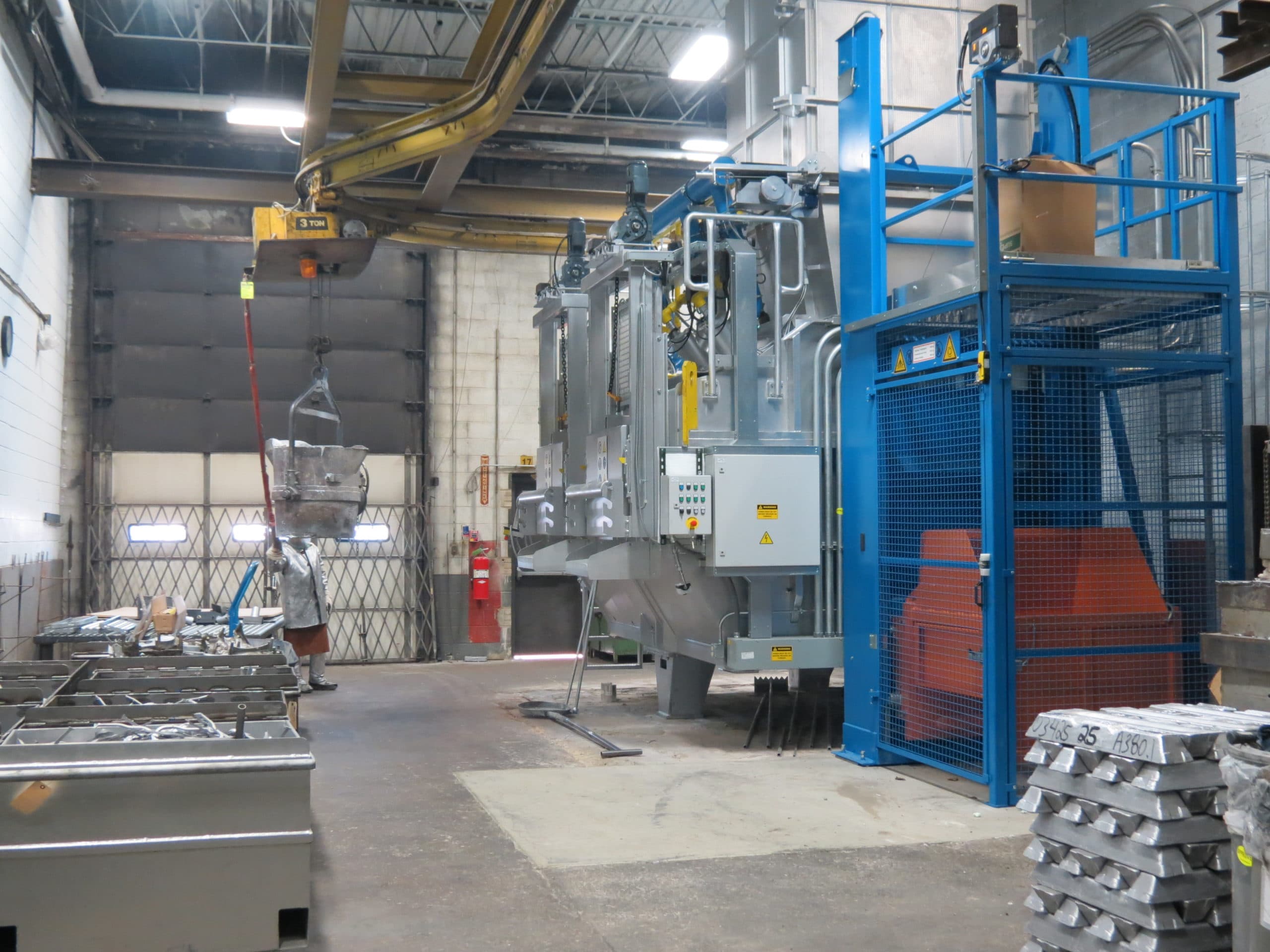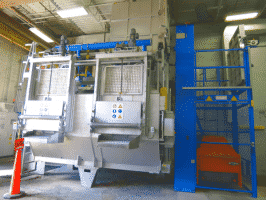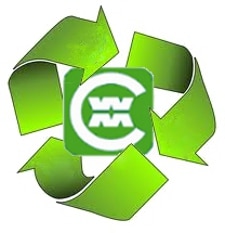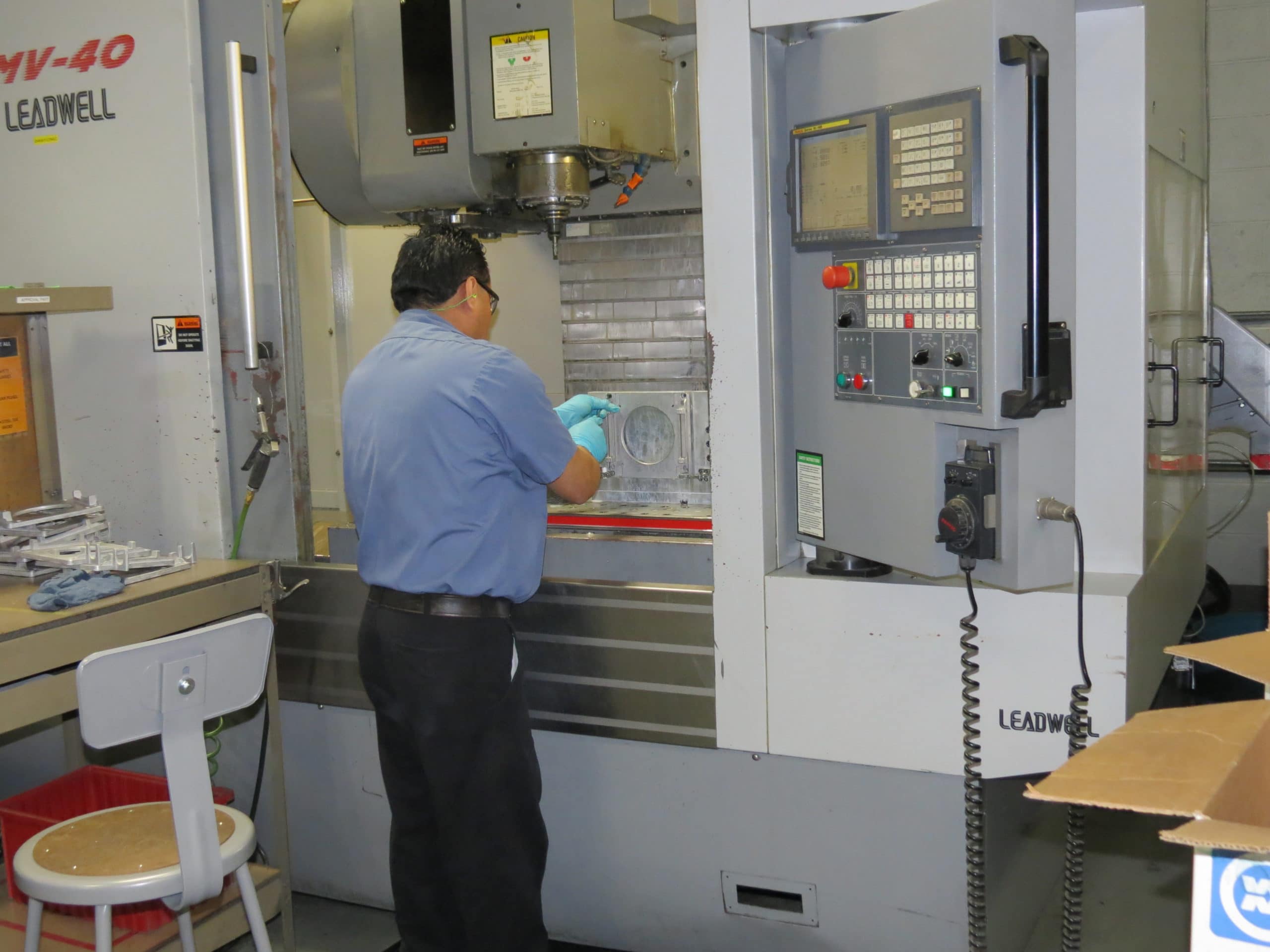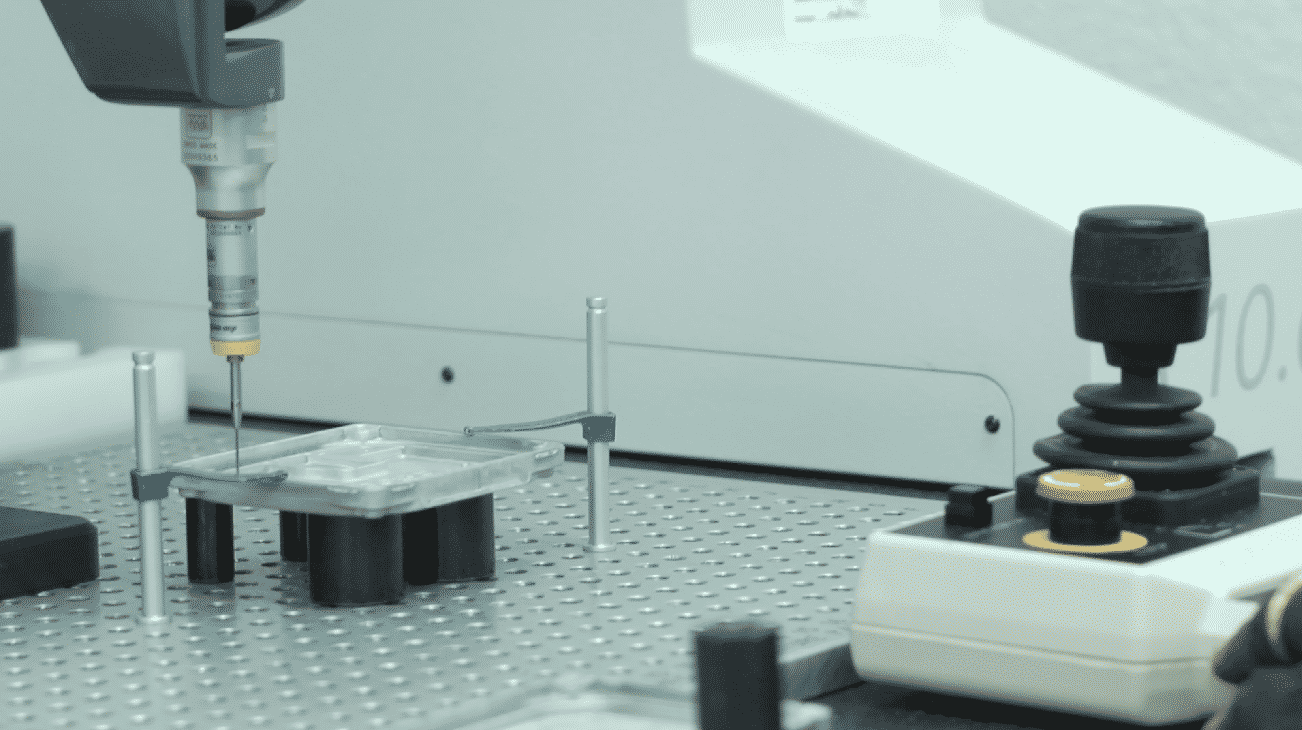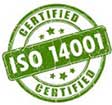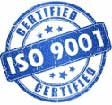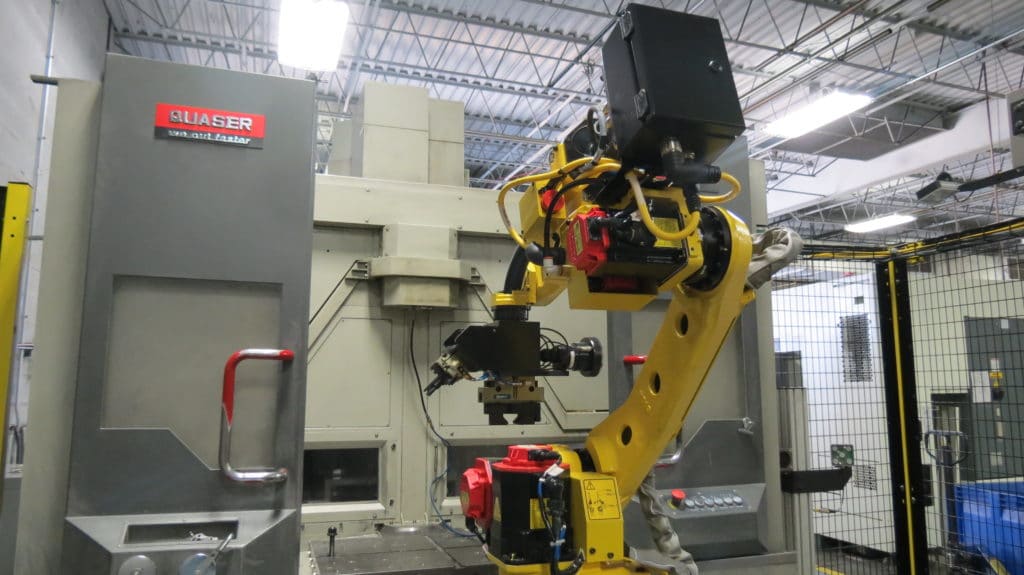
Chicago White Metal remains very proactive in the research and implementation of advanced technology into the die casting process, added value and finishing operations. CWM leadership encourages an environment where team members can examine and suggest alternatives to current techniques in order to improve and enhance quality, efficiency and measurability. This ultimately leads to an overall efficiency for existing and future projects. The team is always excited at the prospect of taking an original idea and watching it grow into a reality.
One idea that came to life in 2021 is the implementation of robotics and automation technology in the CNC department. There are currently 6 active robot implementations: 4 Universal Co-bots and 2 Fanuc Robot Cells. These robots were commissioned quickly in the past 12 months, calling for the promotion of Daniel Lechuga to Automation Specialist in order to keep up with the equipment maintenance and wiring.
The Fanuc Robot Cells are dedicated to several tasks such as facilitating added value and finishing operation checks, leak testing several parts at a time, and tending to CNC machinery. This allows team members to tend to other machines and focus on performing more critical tasks. The Fanuc robots were the first to be integrated into the CNC department and can be seen on the shop floor with cages around them. They are currently facilitating parts for an archery riser and an automotive ECU housing.
The Universal Co-bots are collaborative robots that work safely alongside humans. The robots themselves have sensors that detect when someone is near or approaching the robot, triggering the mechanism which slows down and stops the machine. Chicago White Metal implemented four co-bots, which are currently handling parts for two different models of portable oxygen concentrators, a crossbow riser, an electronic housing, and a medical device handle.
